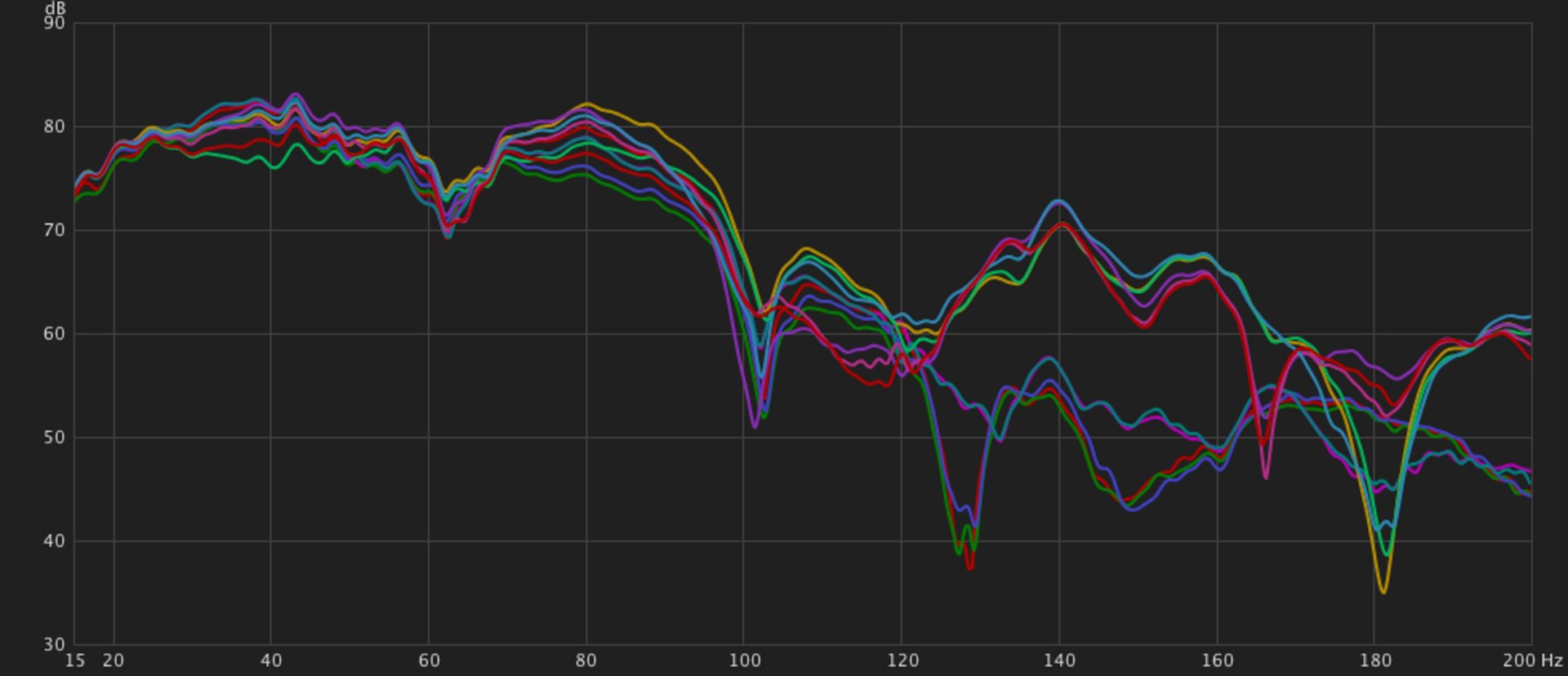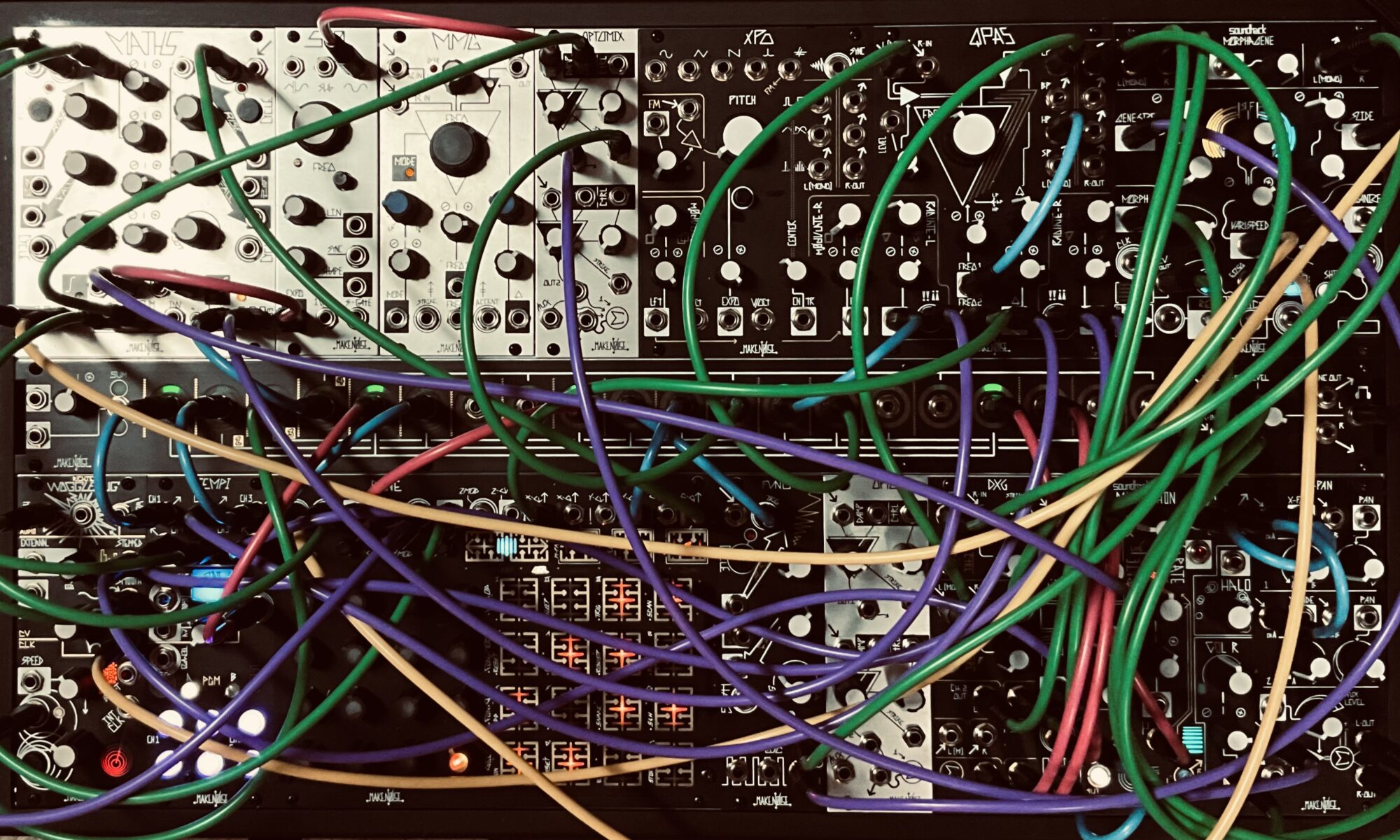Confession time: I have a weird relationship with Make Noise. I mean, I love their modules. Most of the time. And I think their philosophy of making modules that are part of a coherent, customized musical instrument is spot on. Most of the time. But seemingly more than any other Eurorack brand, Make Noise will build a wonderful product borne of a brilliant idea, and then during the design process make one, or more, decisions that makes one wonder just what they were thinking.1
Like most people I started my Make Noise journey by integrating individual modules into a larger system. A module here and another there turned into a full 168hp Make Noise Subsystem that was integrated into a larger system mostly made up of single brand cases. Of course I’d found use of them in integrated patches, but with a couple of exceptions, I found myself opting for something other than Make Noise modules. If I had more than one or two Make Noise modules in the patch, generally most of the patch was dedicated to Make Noise modules. But there was something that always seemed amiss. I just never felt like my Make Noise Subsystem fit particularly well within a huge modular synth.
And so without any desire to rid myself of Make Noise, I’ll admit to having contemplated it several times, I decided to lean in and completely separate Make Noise from the rest. To allow it to be the instrument it wants to be on its own terms, and not a bit part in someone else’s show. To be free.
Once I made that choice, I had other hard decisions to make. By switching over to a 4 Zone CV Bus Case, I afforded myself 40 more HP, plus the CV Bus,2 but I still had to perform some rearranging to fit in everything nice and tidy. I added a couple modules that I thought were necessary to have a cohesive and “complete” Make Noise system (namely Rene v2 and a DPO). I had to pull a couple of choice modules out (LxD, MMG, STO). But before I made that switch, I decided to do a patch that included at least one of them.
I hope to make Made Noise a series of posts dedicated to the many bleeps and bloops created with my full Make Noise system. I’m sure I’ll find ways to use it with my larger synth again, but for now Make Noise will will fly solo.
This first sketch started as a rough recreation of a patch Walker Farrell did 5 years ago, called “Patch From Scratch: QPAS & Tempi.” I’ve always loved QPAS for pinging, but I had not gone all out with modulating it before while pinging. How boring. I also knew from the start that I wanted to integrate Morphagene into this patch, and I wanted to experiment with modulating zones in Mimeophon.
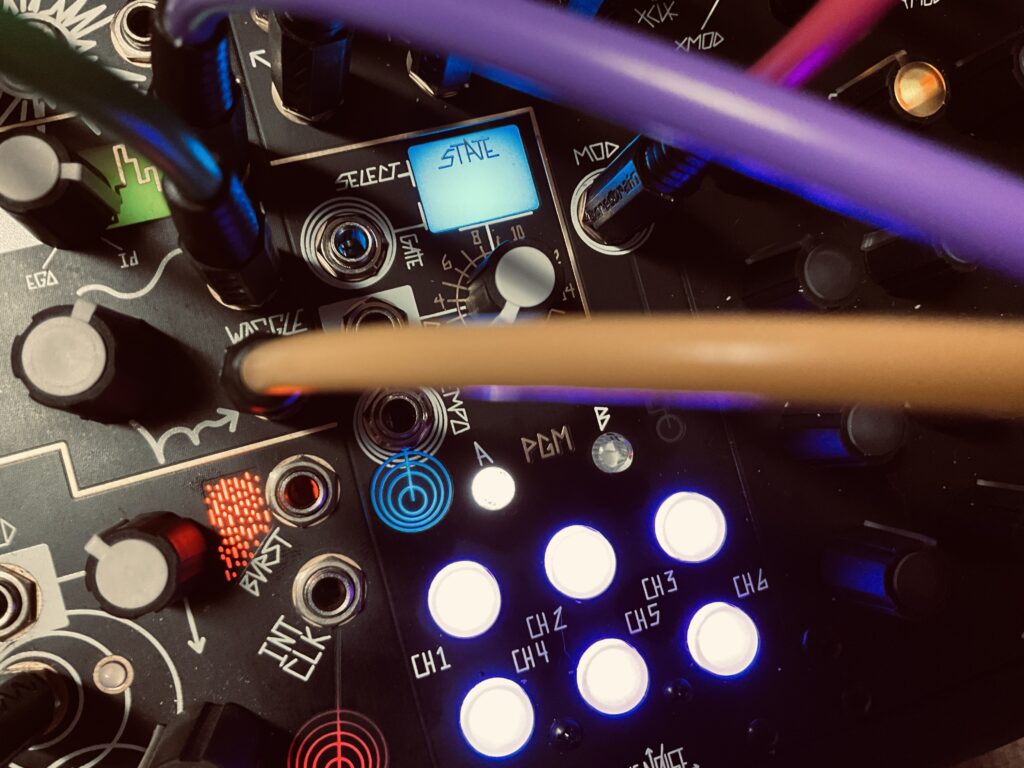
The patch is easy enough in theory. Some gates from Tempi, happening at various clock divisions, pinging QPAS’s input, as well as the R Radiate, L Radiate, and !!¡¡ inputs, while triggering various other events. But these gates run deep by being spread around the case through the CV Bus triggering Maths, Function, as well as clocking Mimeophon and Rene. End Of gates from Maths and Function are also being used to trigger different events around the patch. One Tempi channel is also performing some self-pleasure on the Mod input, which shifts the clock divisions around for a continuously changing rhythm and melody line. These shifts effect every aspect of the patch.
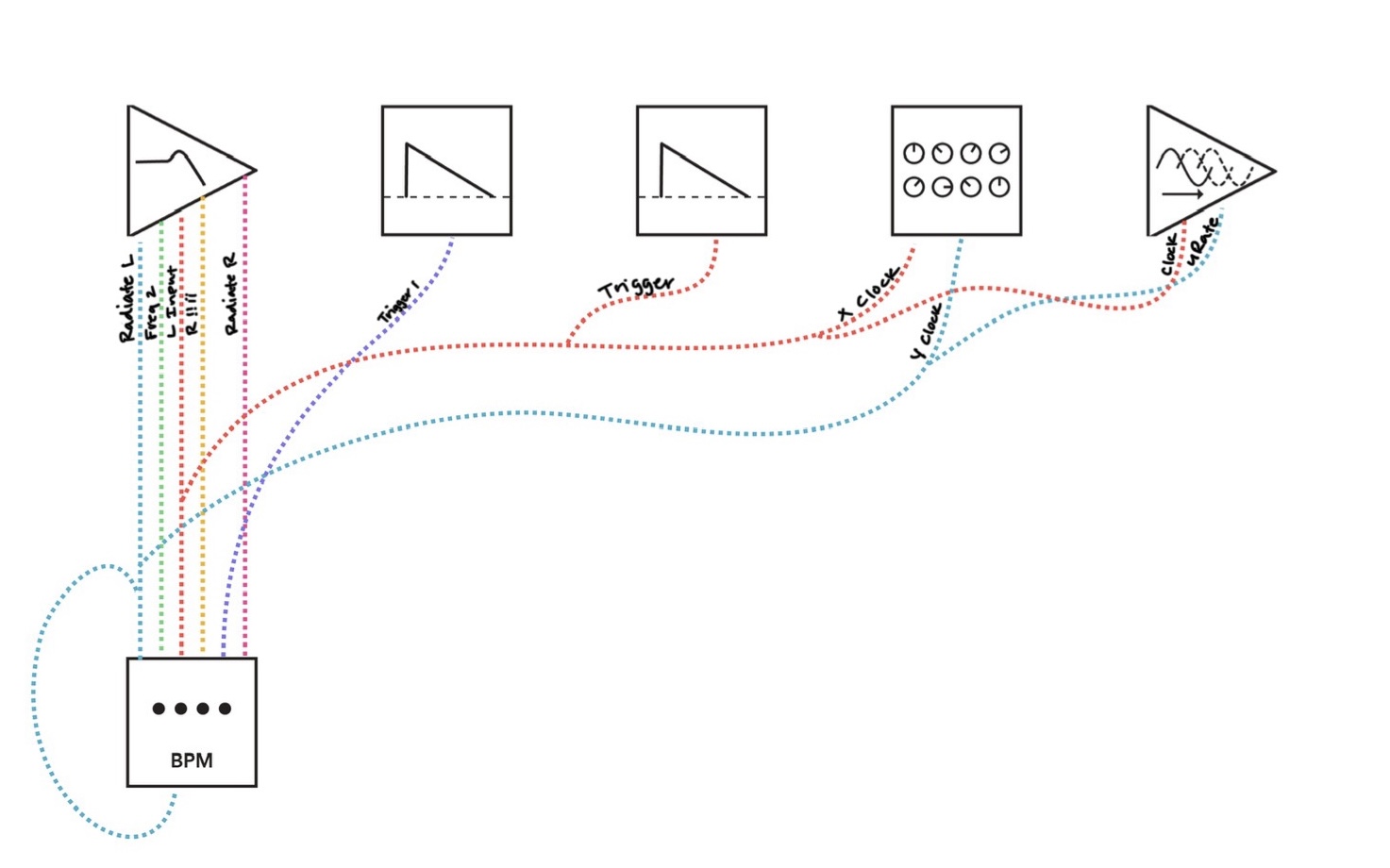
CV is sent from Rene’s X Channel to the Resonance CV input on QPAS, to keep the rhythm lively with having varied tail lengths, and changing the melody notes. There’s a familiarity there, but it’s not really repeating exactly. The Y Channel gates are triggering the Wogglebug S&H circuit, and the Cartesian Channel gates are triggering the deep kick of the STO.
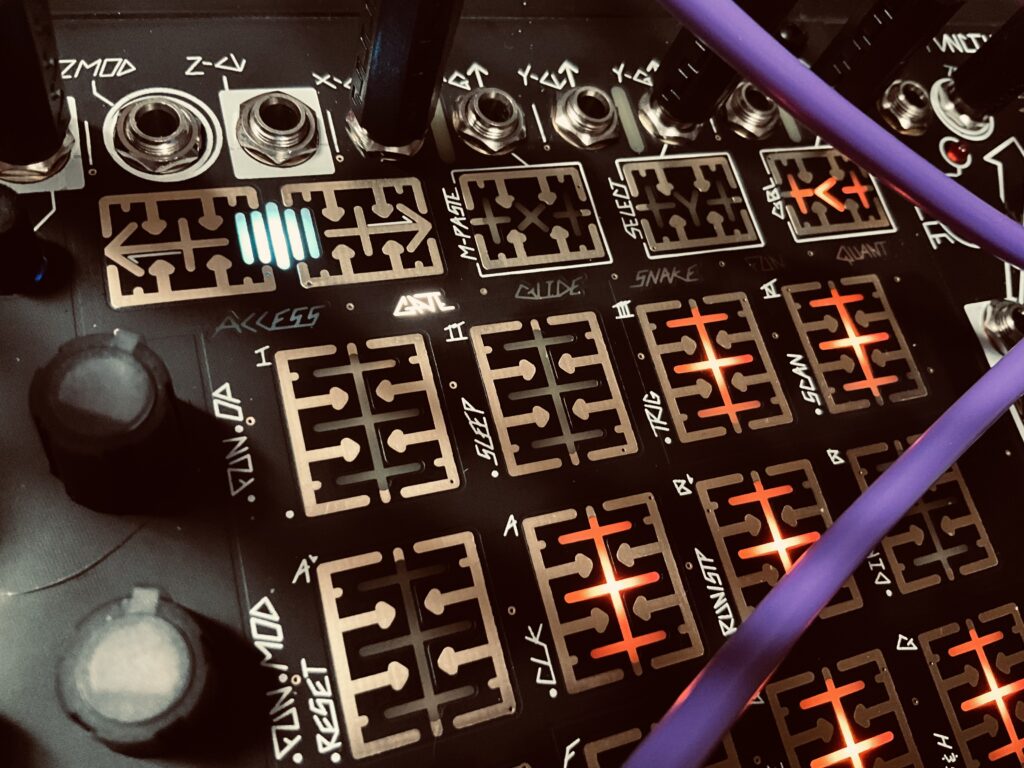
The QPAS is being heavily modulated. In fact, there isn’t a control input not being used. Radiate L & R, Resonance, Freq 1, Freq 2, and both !!¡¡ inputs are modulated by gates from Tempi and CV from Rene’s X Channel, a Function envelope. Freq 1 is a bit of patch programming from the L HP output.
While the Tempi and QPAS are doing the heavy lifting throughout the patch, like a lead guitarist, the Mimeophon is what gives it some polish, and that extra bit of oomph for everything to come alive in an ever-changing flow of repeats, jitters, and screeches. While the shifting gates from Tempi are clocking Mimeophon, as well as pinging the uRate CV input, it’s also being modulated by the Maths Sum output, the Morphagene CV Output, a Maths envelope, and Wogglebug (stepped output). I wanted to get an idea of what modulating zones would be like, and it turned out even better than what I imagined it could be. The modulations between carplus strong-like sounds to long drawn out echoes created a sense of splendor and ever changing tones.
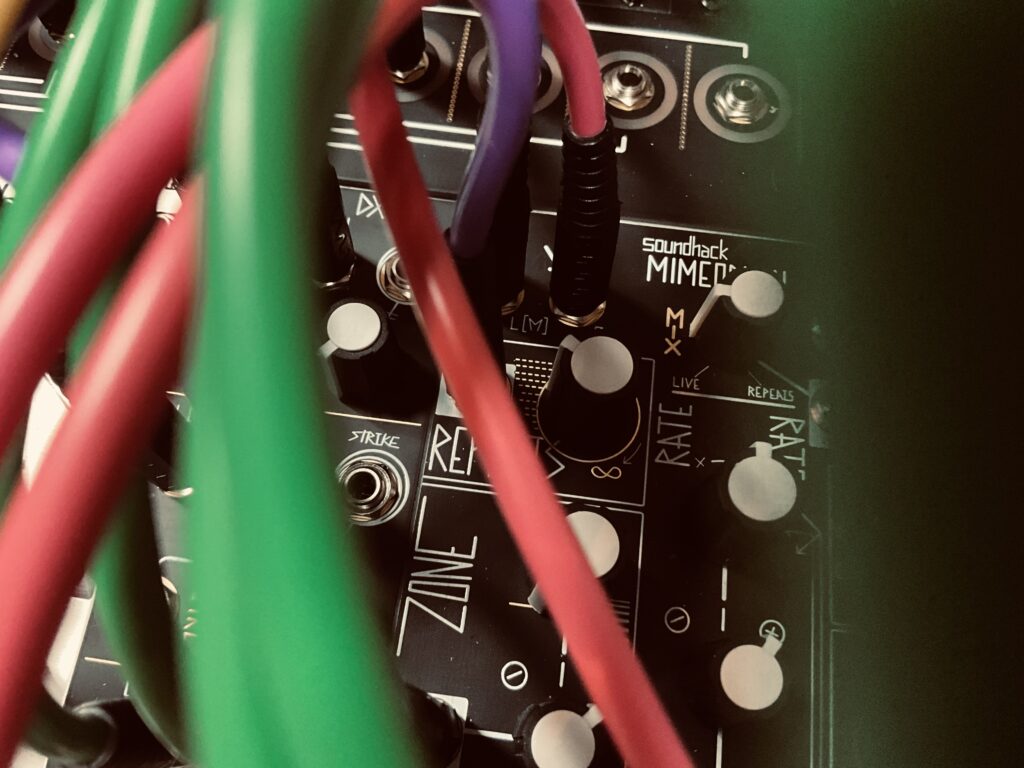
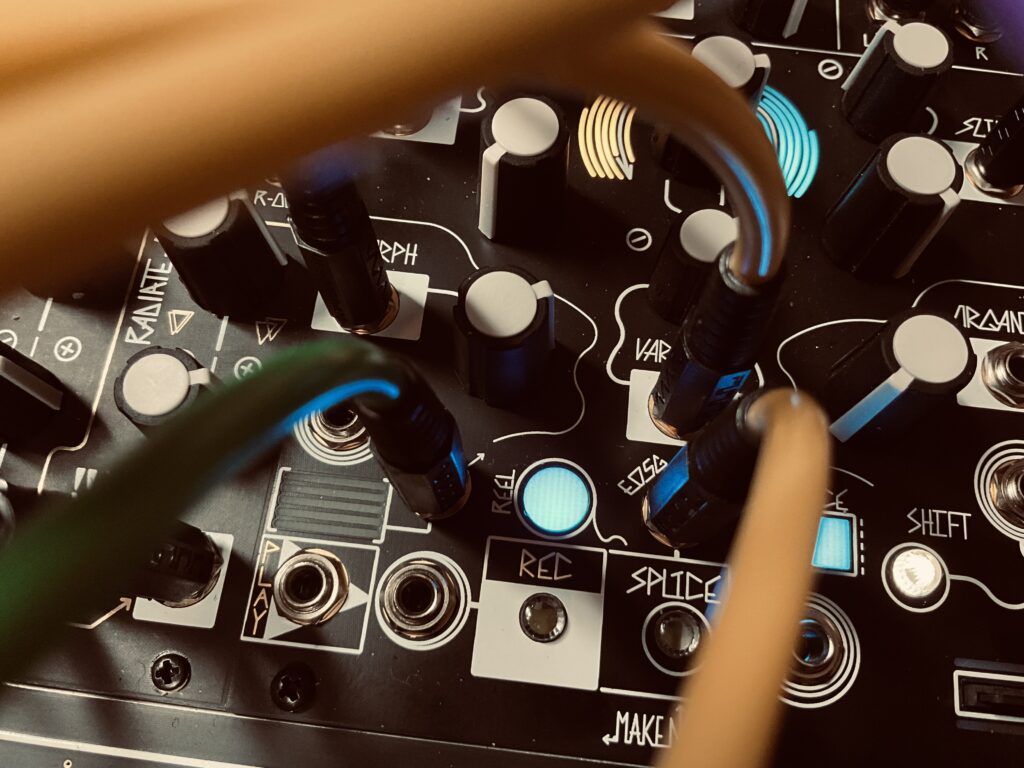
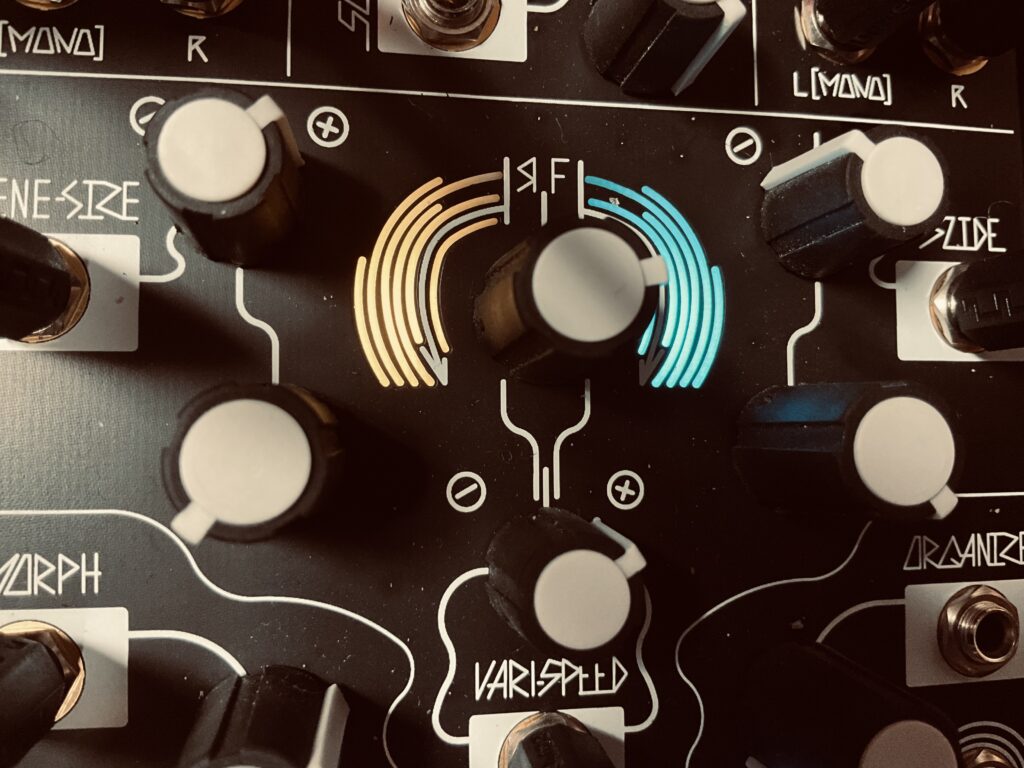
Morphagene too gets in on the action. I wanted a bubbly swirl, and by goodness I got a bubbly swirl. I’ve had Morphagene for a while, but it just wasn’t one of the granular-like processors I’d reach for. It was fun, but never integral. In this patch, it lends a level of instant fun and really brightens the sketch. I’ll be the first to admit that it’s probably too loud in the mix, but I do very much enjoy the whimsical direction it gave to an already whimsical melody. The slowing tape machine sounds, the speedy and gurgle fast forwards and rewinds all contribute to the fun.
This certainly isn’t my last patch with this new Make Noise Satellite Subsystem. It’s a level of immediacy and fun that’s hard to replicate with other brands. Here’s to the next one.
Modules Used:
Tempi
QPAS
Maths
Mimeophon
Morphagene
Rene Mk2
Wogglebug
Function
STO
DXG
X-Pan
Optomix rev2
CV Bus Mk2
Improvised and recorded in 1 take on the iPad in AUM via an Arturia AudioFuse.
**********
- The DXG being unable to not mix, and not having a way to get both LPG channels out individually seems to me to be headbangingly shortsighted. There is no good argument for their premium 4 Zone CV Bus Case having M2.5 screws and sliding nuts. I could go on.
- Although the CV Bus is little more than a glorified passive multiple, its implementation is incredibly well thought out and unendingly useful.
